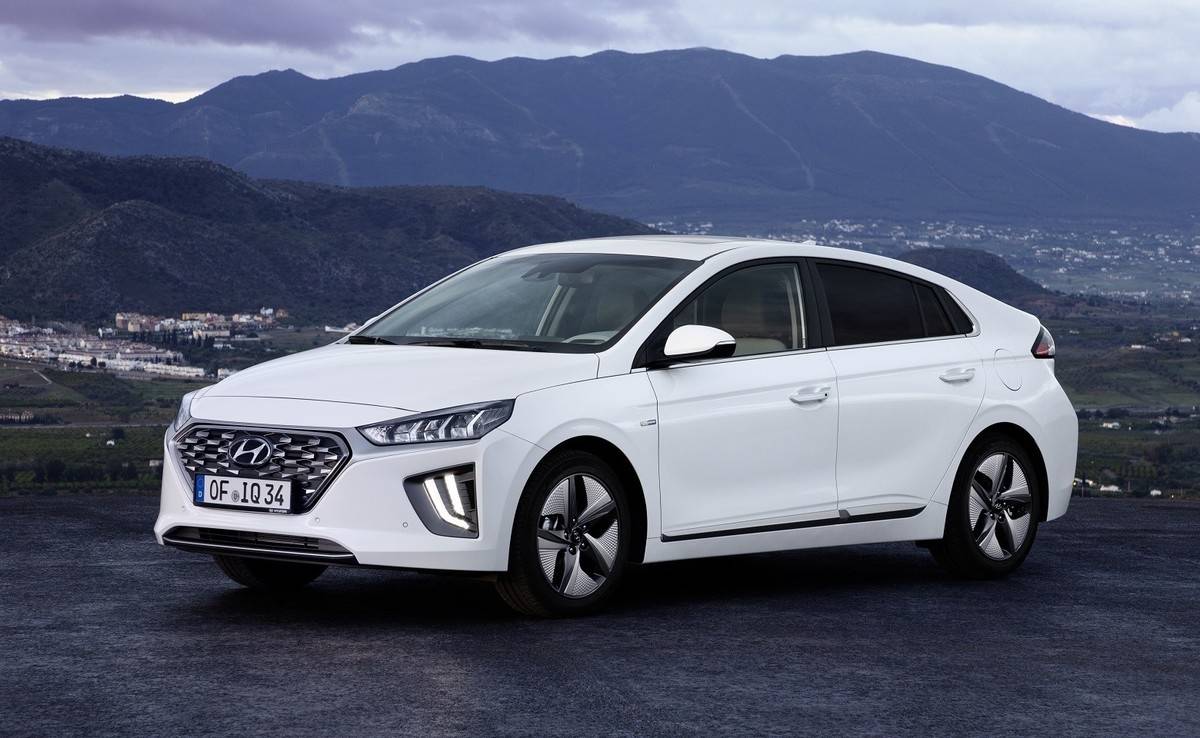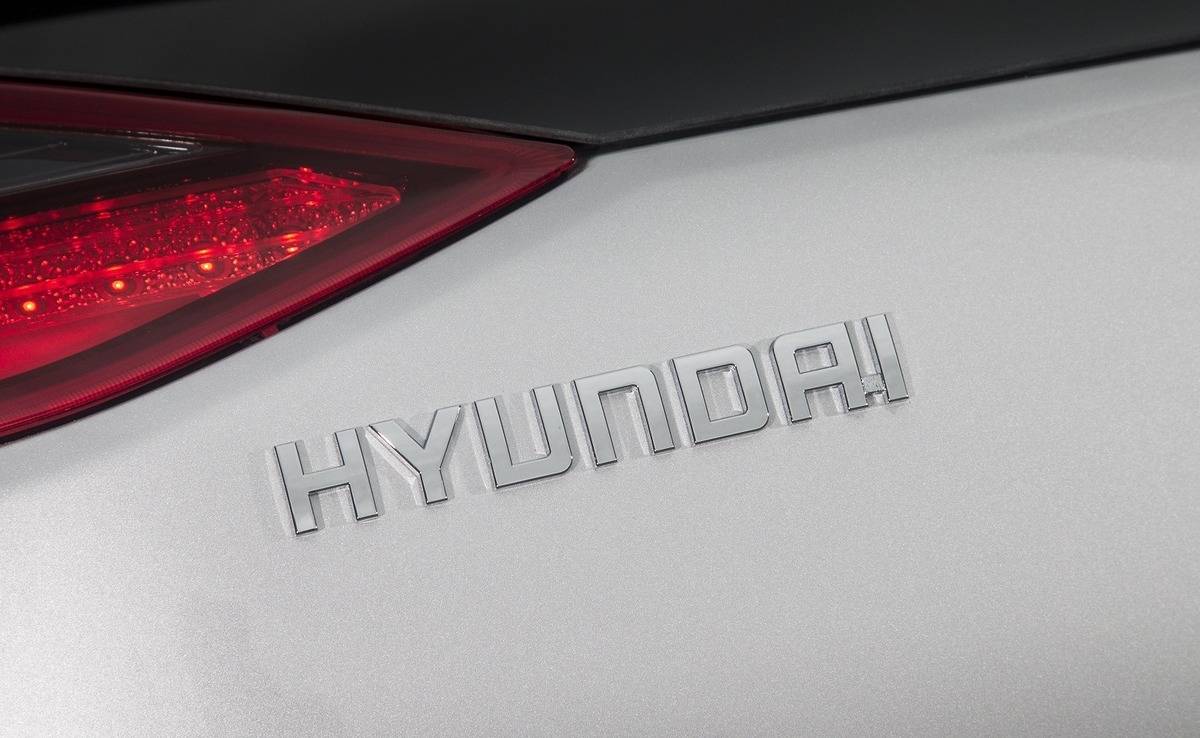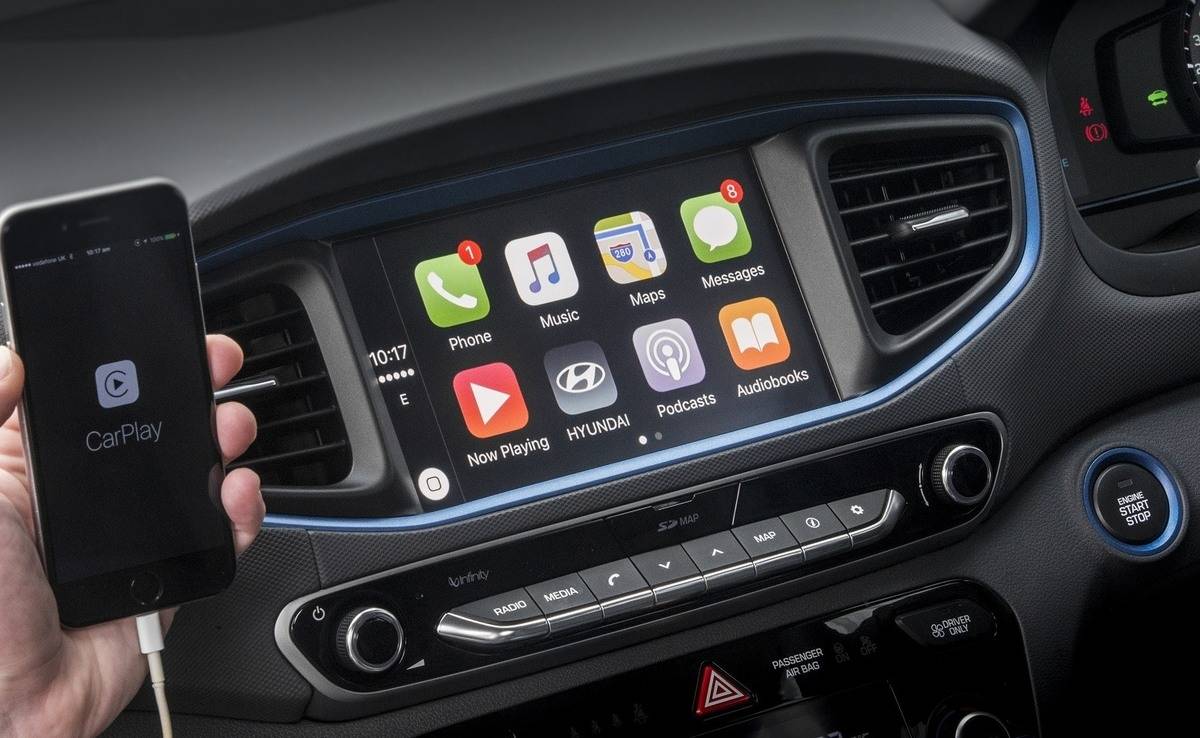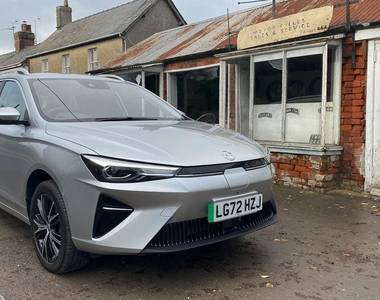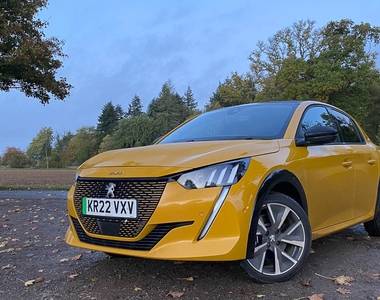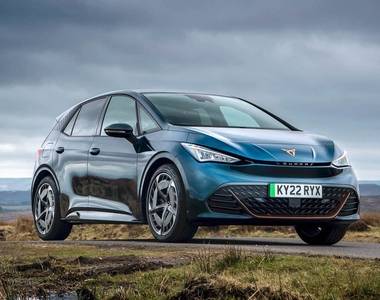The Car.co.uk verdict:
4.3The Hyundai Ioniq’s hybrid version will give its competitors a run for their money. Standing tall against the Toyota Prius in the economy stakes, it’s definitely distinguished itself as a viable alternative. With a five-star award for safety in its class, you couldn’t be in a more secure car.
Functional on the outside and comfortable inside, the Hyundai makes for a really enjoyable drive, particularly about town where its unique features truly come in to play. It’s quiet electrics make for near silent pulling away, and the excellent brakes handle city traffic smoothly.
A plug-in-hybrid version gives eco-minded owners a new option, although it doesn’t handle as well and the boot space is limited on account of the battery. However, if you work within the charge of its battery you could have a very cost-conscious work car at your command.
Pros
- Very affordable to run
- Five-star rating for safety
- Well-designed quality interior
Cons
- Lack of headroom due to design
- Large batteries on EV reduce boot capacity
- Higher trims are expensive
At a glance
- Looks
- Practicality
- Engine & power
- Reliability
- Equipment & options
- Interior
- The drive
- Cost
- Safety
- Why Buy
Looks
4 out of 5Aerodynamics at work on a coupe styling
The Hyundai Ioniq has been designed with a coupe styling, delivering an attractive silhouette for a car of its class. Aesthetics have definitely been considered, denoted by a swooping roofline, but the overall effect is still functional and traditional by design.
It’s perhaps early days for low-emission cars, but it’s reassuring to see consideration for form as well as function being given a nod here at Hyundai. There is still an aerodynamic quality to the build and it’s been designed specifically for comfort to its passengers in terms air flow on the car, which boasts a 0.24 coefficient for drag to put it at the head of its class.
Practicality
4 out of 5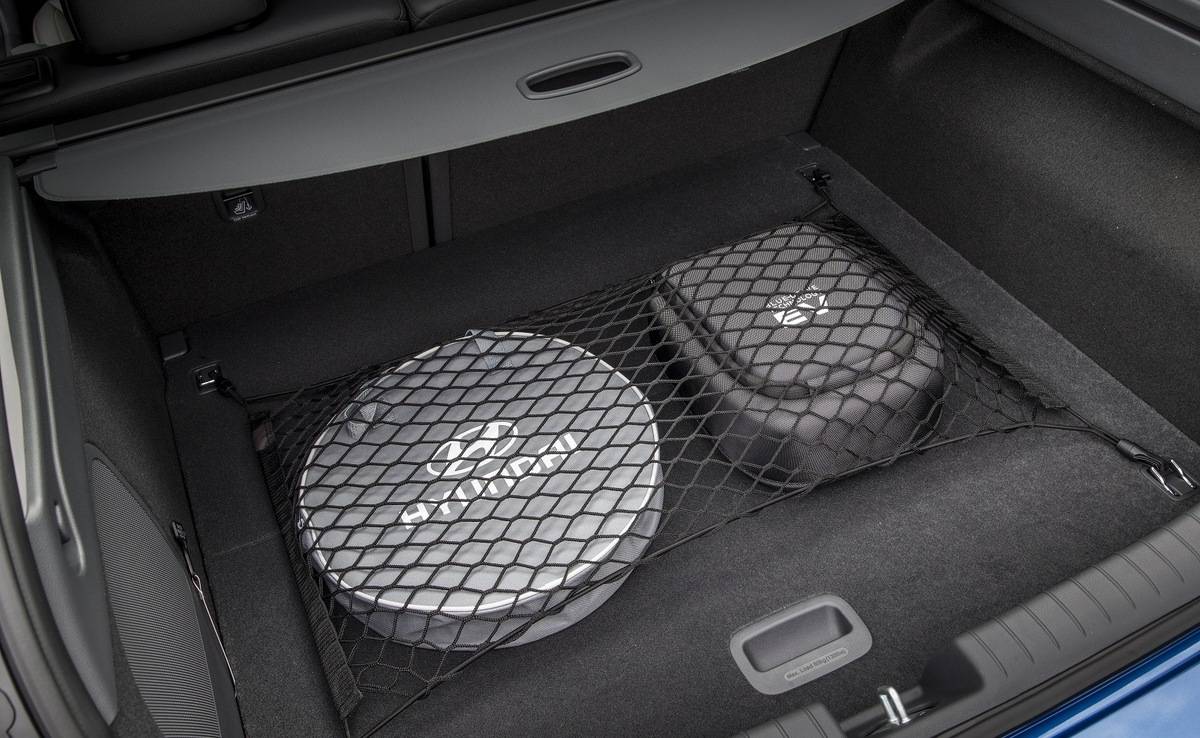
Great space, but design hampers headroom in the rear
The Hyundai Ioniq dimensions are 4,470mm in length, 1,820mm in width and stands at 1,40mm tall. It features an abundance of room in the front. Both driver and passenger seating areas sport plenty of legroom and head clearance – enough space to rival most hatchbacks designed for the family. The rear seating is great for legroom too, although for occupants who are taller than average, the headroom is limited due to the Ioniq’s design. The roof lining is sloped towards the rear of the vehicle and in this respect, the Hyundai Ioniq is bettered by its competitors.
The Ioniq's boot-space is technically a lot larger than that of its rival, the Prius, but it’s not very deep and has a steep lip at the loading point. Still, it’s a good-sized space and if you need a little more, the rear seats fold in a 60/40 division. While great for carrying more lengthy loads, bear in mind that the seats, once folded, don’t leave the flattest of loading bays.
Those purchasing one of the EV models should be mindful that its larger batteries are rear mounted and will cause a reduction in the size of your boot space.
Engine & power
4.5 out of 5
A smooth drive and a quiet ride about town
The Hyundai Ioniq spec, with the Plug-in Hybrid and the Ioniq Hybrid, combines an electric motor with a petrol engine working in unison. Both are far faster than the Prius and very similar to the majority of hatchbacks run on diesel.
The dual clutch six-speed gearbox is standard in both versions, but can make them a little slow off the mark. However, once you get running, the gear changes are smooth and quick. Using paddles, you also have a manual choice, which is particularly useful on downward slopes when you’re braking.
Both the Hyundai Ioniq Plug-in Hybrid and the Hybrid are almost silent on electric power when they drive off. If you want to achieve this level of quietness, just step carefully on your accelerator pedal to stop the petrol engine kicking in. On occasions when the petrol does make itself known, it’s a very smooth transition with just a little background humming from the engine.
The EV Hyundai Ioniq version is quickest off the mark, making full use of the instant push of its electric motor to shoot away in silence. As with many EVs though, it feels a little run-of-the-mill beyond 50mph, but bear in mind that this is designed for town driving and as far as that’s concerned, it’s a perfect fit.
Reliability
4 out of 5Hyundai stands by its hybrid
With five-star safety credentials, the Hyundai is a great choice for a hybrid car if you’re in the market. While independent data regarding reliability is not available at present, the unimpeachable safety rating is an indicator of good things.
The Ioniq ships as standard with a five-year warranty, and its chargeable battery with an eight-year warranty, so Hyundai is definitely willing to back its hybrid in the reliability stakes.
It’s difficult to compare the Ioniq’s reliability with the brand’s other cars as it uses so much new Hyundai technology, but owners have voiced their satisfaction with the Hyundai range and it ranked very well in the Driver Power Survey 2018.
Equipment & options
4 out of 5Three choices of trim
The Hyundai Ioniq’s entry-level trim, titled ‘SE’, is equipped with a full-colour five-inch touchscreen display, but if you step things up a gear and opt for the ‘Premium’ Hyundai Ioniq spec, you receive a larger screen at eight inches, complete with satellite navigation and TomTom traffic reports. The system is very user-friendly and highly responsive.
As with all touchscreens, they are great when your car is at a standstill, but on the road it can be frustrating and you might miss physical controls. Other benefits of the Premium upgrade include Android AutoCar/Apple Carplay, smartphone connection and map updates.
If you want to go for the top dog, the “Premium SE” is a steep increase in price. For your money, you gain the additional benefits of a blind spot warning system and rear- and front-located parking sensors.
Interior
4 out of 5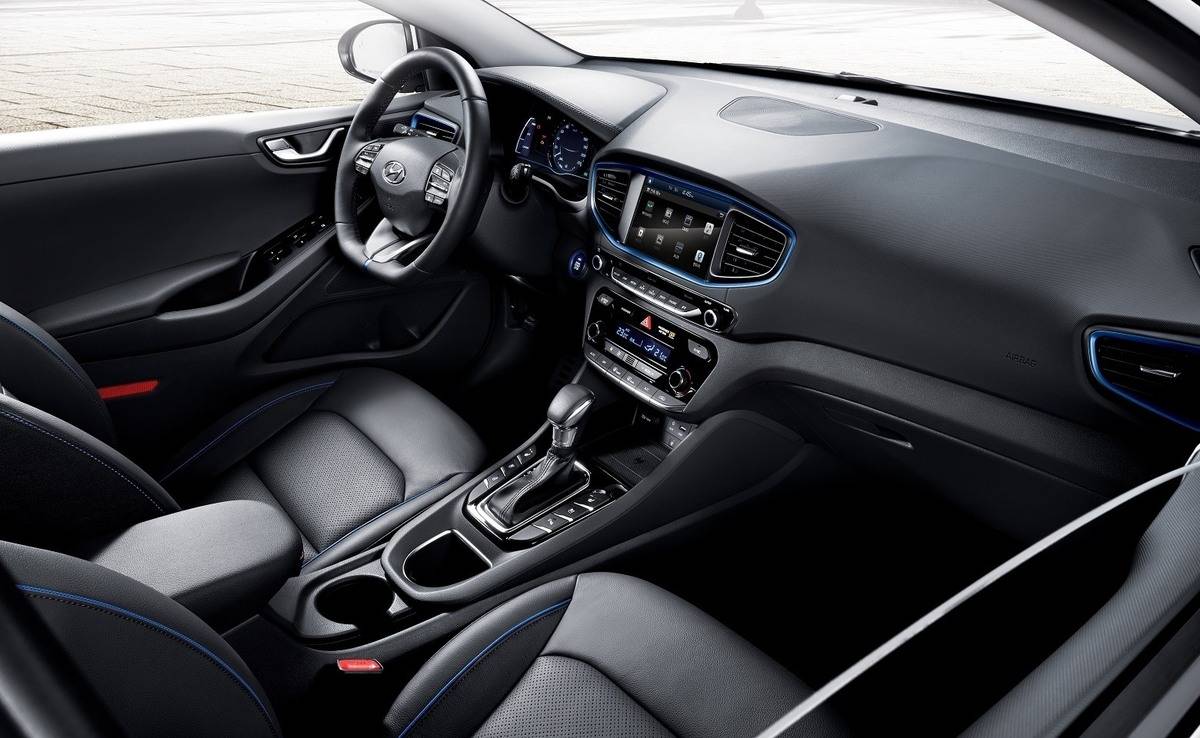
A thoughtful design for comfort and ease
Drivers of all shapes and sizes will find comfort in the Hyundai Ioniq, with full adjustment available for both the steering wheel and seats, with well-placed pedals. Although due to the swooping roof driver visibility is somewhat hampered, there’s a great vantage from the front.
Overall, the interior of the Hyundai Ioniq is quite simple, but what the Korean manufacturer has done with the inside is very well done. In terms of quality, there are plenty of soft-to-the-touch materials used on the surfaces and the controls feel strong. Everything you need to get your hands on has been ergonomically designed. The layout is smart and easy to use, and a lot of thought has gone into making this cabin as user-friendly as possible.
There are three choices of trim, so you have a good selection of models to choose from when it comes to onboard equipment.
The high-end Premium SE trim is a little expensive, but delivers the added style and comfort of electrically adjustable front seats, heating in the rear seats, and all of them upholstered in leather.
The drive
4.5 out of 5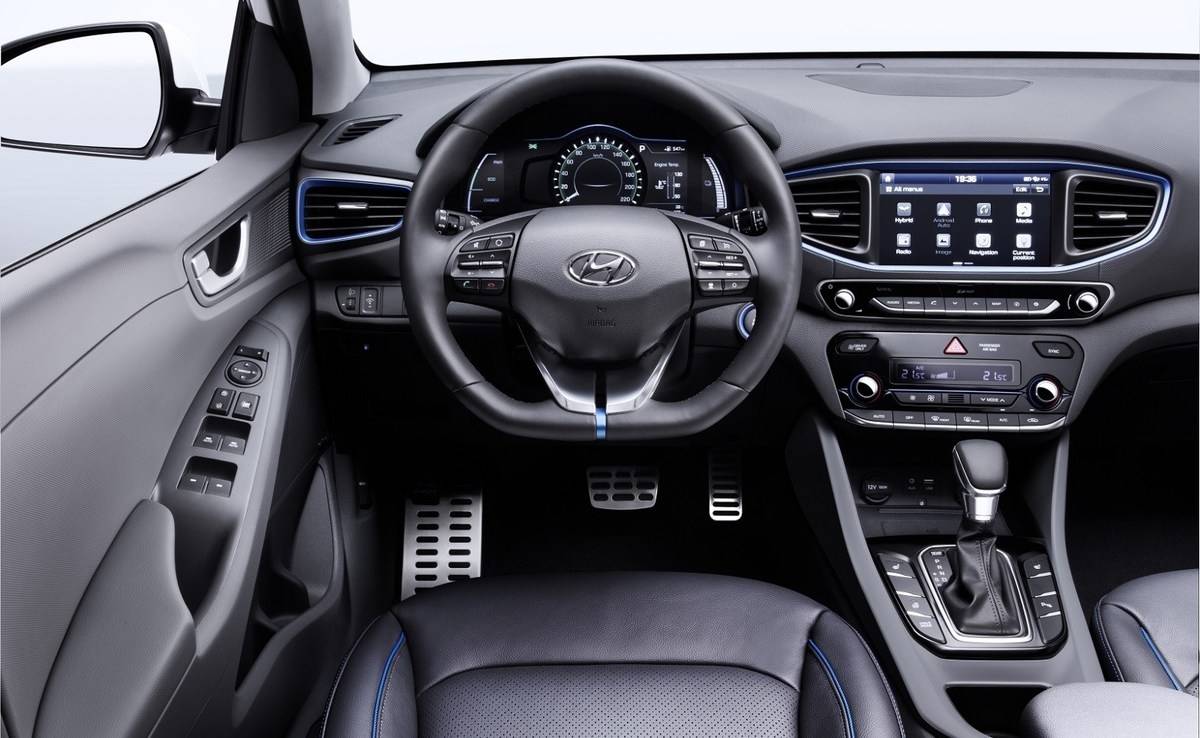
Great for town, but some versions suffer on uneven surfaces
The Hyundai Ioniq was designed to handle well around towns and this is reflected in its steering, which is both light and very simple to cope with. It’s not too bad on B roads either; although the steering is still somewhat light, there are additional modes such as Sport that can add a little weight. It works, but it can feel a touch heavy handed after the lighter drive.
The Hyundai Ioniq excels at corners and has great grip and traction leaning into the bend. The brakes are surprisingly smooth compared to other cars in its class, which can be particularly useful in stop-and-start city traffic.
About town, the Hyundai Ioniq is a firm drive but never to the extent that it feels uncomfortable. On the other hand, this means that at higher speeds it still feels very balanced even on undulating surfaces.
Not so nimble is the Plug-in Hybrid Hyundai Ioniq specification. Due to the much heavier and larger batteries, the EV versions suffer even more in this respect. The additional weight both cars are carrying makes them awkward on turns and you’re going to feel every inch of an uneven road.
All versions of the Hyundai Ioniq provide a comfortable drive at motorway pace, keeping both road and wind noise close to a quiet hum.
Cost
5 out of 5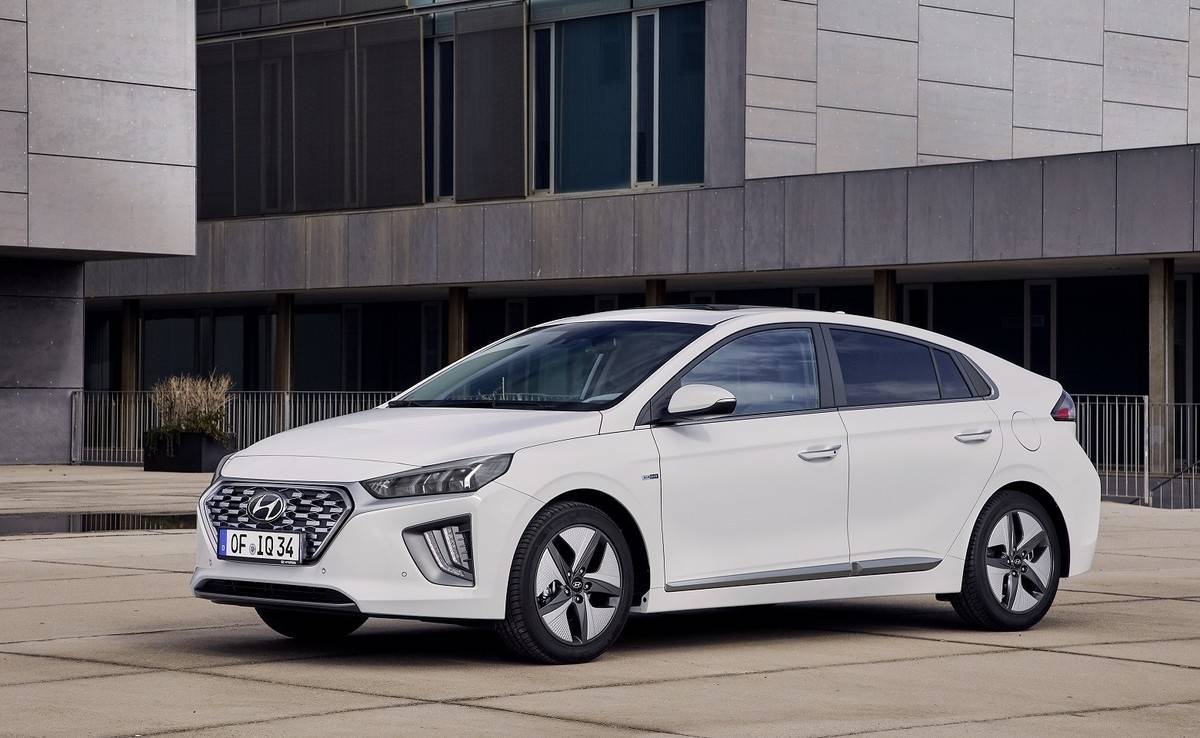
Cheap to buy and economical to run
The standard Hybrid in the Hyundai Ioniq range is predicted to be the top seller in the line-up and undercuts its competitors’ price, including that of the Prius by Toyota. The very low CO2 emissions of the Hyundai Ioniq stand at 84g/km, which is far superior to many diesel hatchbacks of this size.
It is still slightly less environmentally friendly than the Prius, but the Hyundai Ioniq price is lower so it balances out the extra tax on your company car. If you are a commuter and your journey is less than 31 miles, a better choice might be the Plug-in Hybrid, which boasts that it can travel that distance just on electricity.
The standard equipment across all three in the range is suitably impressive, including automatic emergency braking, Bluetooth, rear parking sensors, 15-inch alloys, a DAB radio, climate control, hill start assist and seven airbags.
By paying a little extra for Premium, you will add the benefit of a 7-inch driver’s instrument display, keyless start and an 8.0-inch infotainment touchscreen with smartphone mirroring and satellite navigation. Additional features include ultra-bright xenon headlights, wireless charging for phones, heated seats in the front and an extra USB socket.
Safety
5 out of 5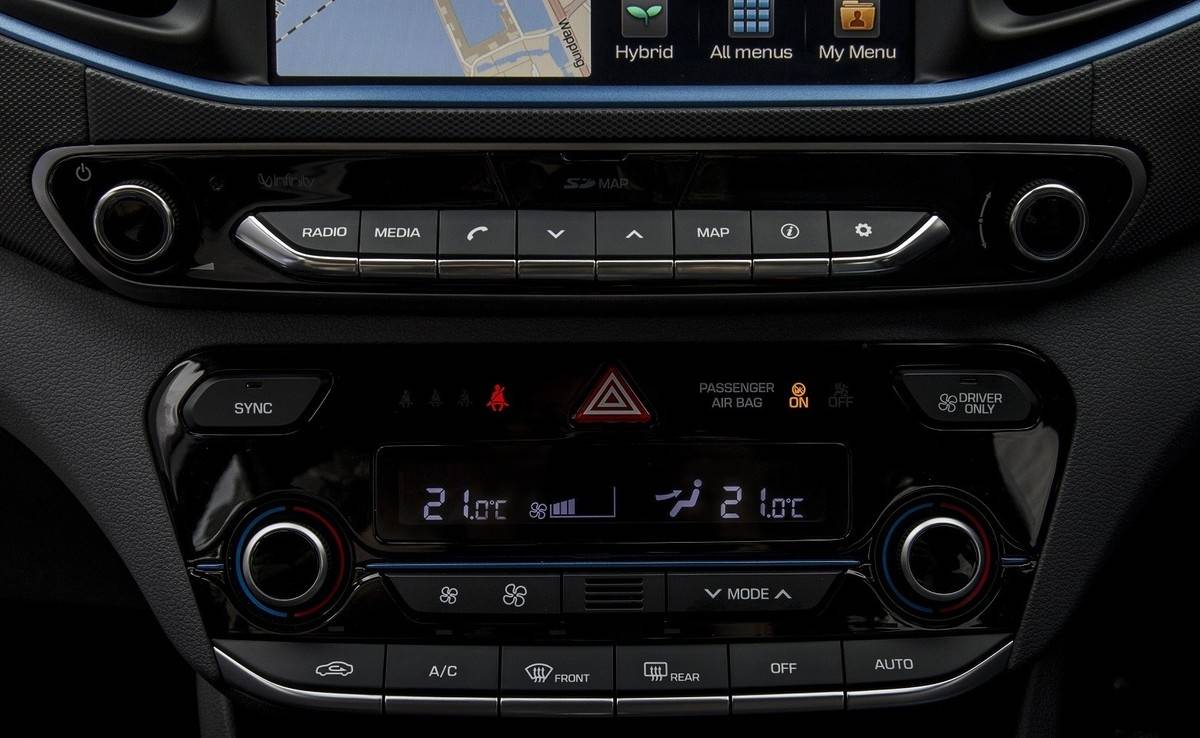
Five-star rating and plenty of features to make it even safer
The Hyundai Ioniq specification ships with rear parking sensors and a camera with a rearward view as standard across the range. This is very helpful in busy urban areas where you need to keep a particularly observant eye out for pedestrians.
Additional safety features are available to owners as optional extras. Blind-spot monitoring is worth considering, as well as the clever cross-traffic alert for the rear that will actually stop the car if the sensor reads perpendicular movement in your way while reversing.
Euro NCAP awarded the Hyundai Ioniq five out of five stars for its performance in crash testing, and it rated exceptionally high within its class for adult protection.
Hyundai has a history of providing lengthy warranties as standard and the Ioniq continues this great tradition of unlimited miles for five years. Equally impressive is the warranty for the Hyundai Ioniq’s battery, which covers eight years over 125,000 miles.
Why Buy
4 out of 5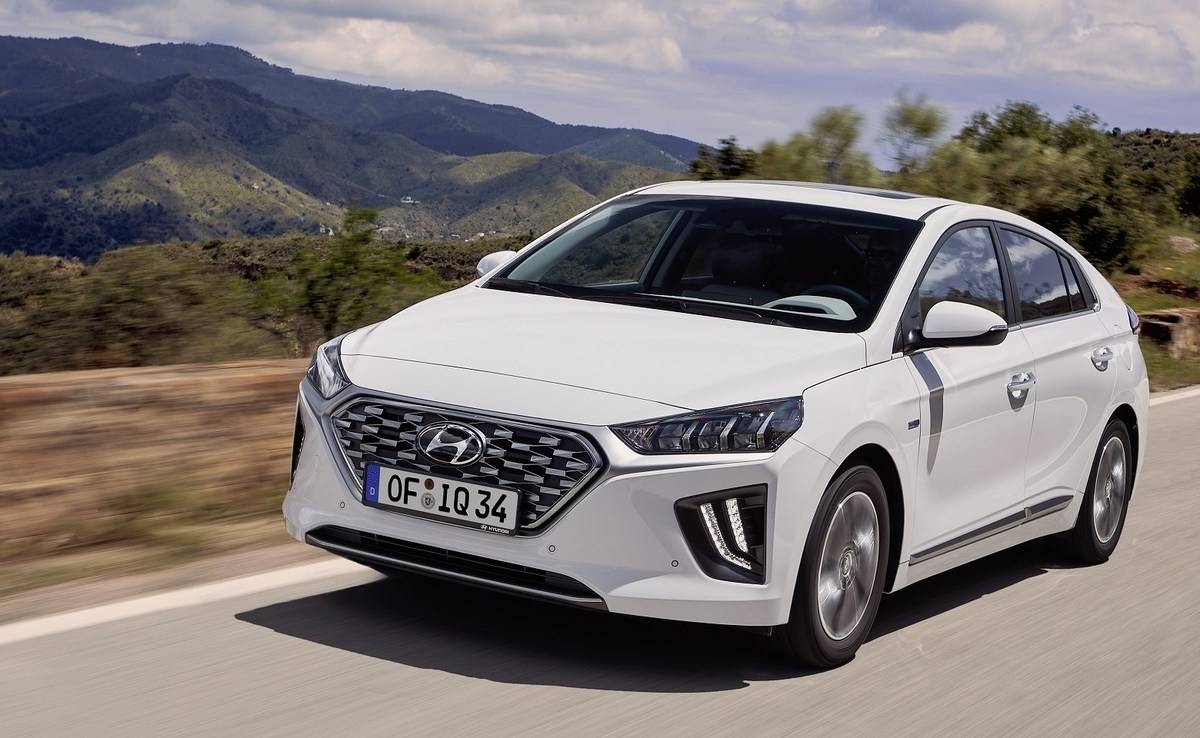
A great combination of economy and eco-friendliness
Highly cost effective to run and less expensive to buy than the Prius, the Hyundai Ioniq is worth considering. While not quite as clean to run as some of its rivals, it’s still impressively low CO2 emissions make it a really good option for your company car, especially if you work within the 31-mile battery charge.
On the inside, the Ioniq might be plain, but it’s beautifully laid out with everything thoughtfully placed for driver and passenger comfort.
The hybrid engine is not only economical, but also allows the Hyundai Ioniq to pull away quietly from your neighbourhood or smoothly from traffic lights, making it especially suited for urban life. Its brakes handle the sometimes jerky traffic of towns remarkably well, and it’s a very comfortable ride overall that handles impressively.
Perhaps most of all, if you’re looking for a car with an unimpeachable record for safety, then the five-star-awarded Hyundai Ioniq is a great choice for you.
